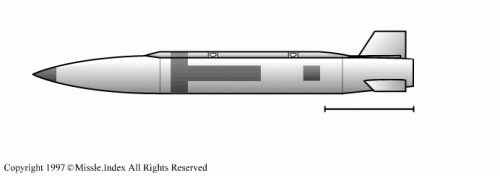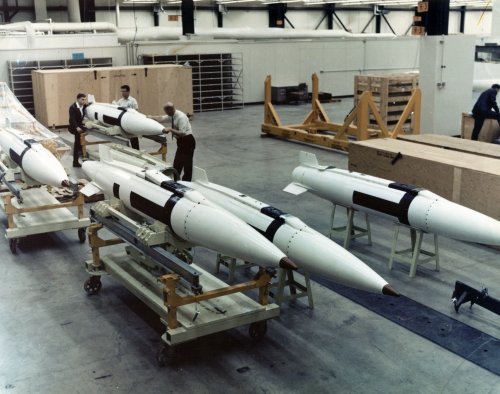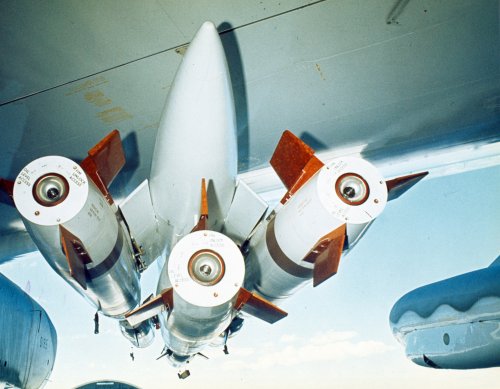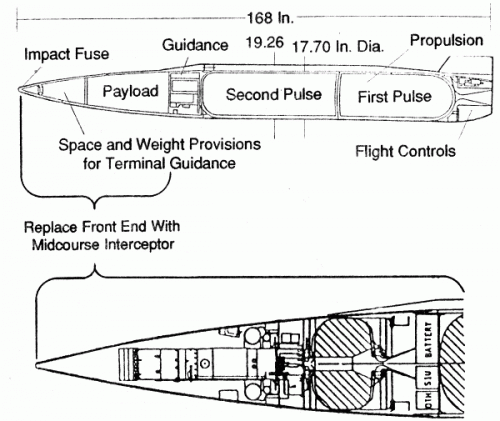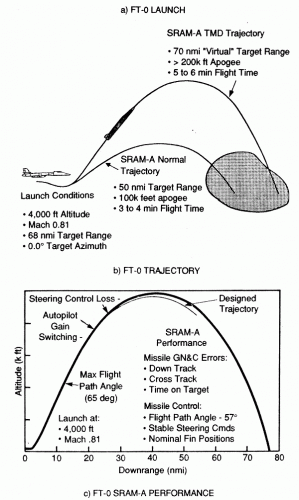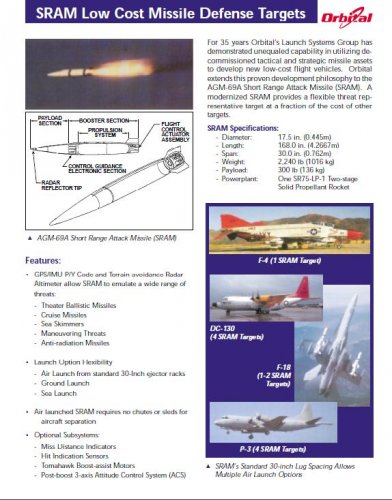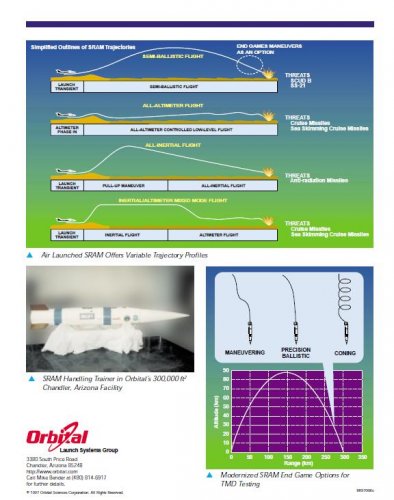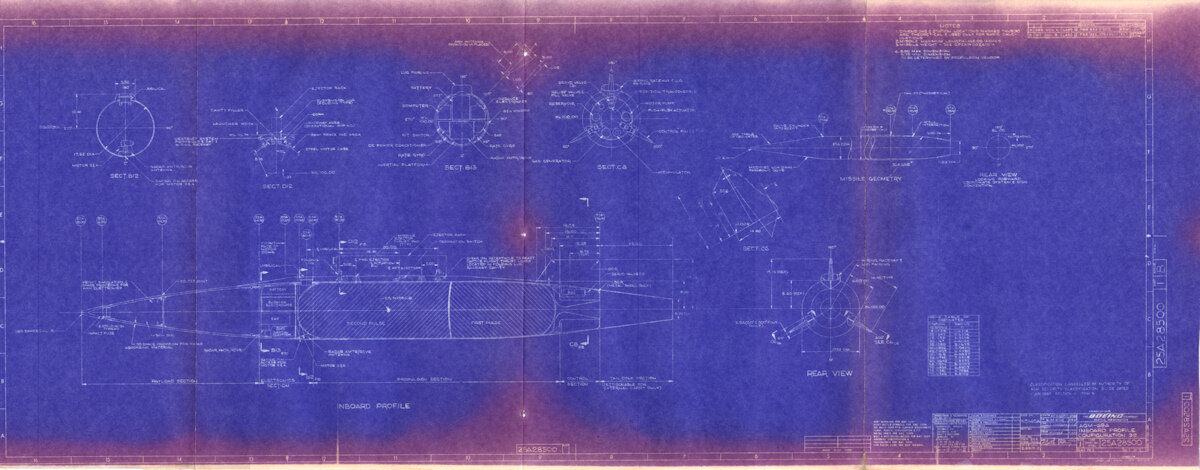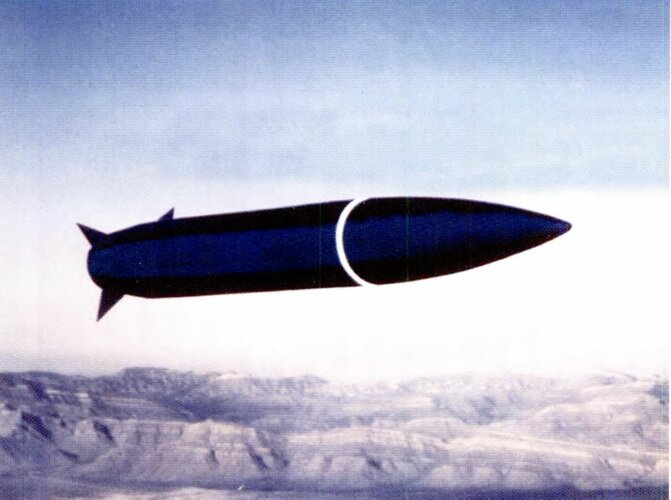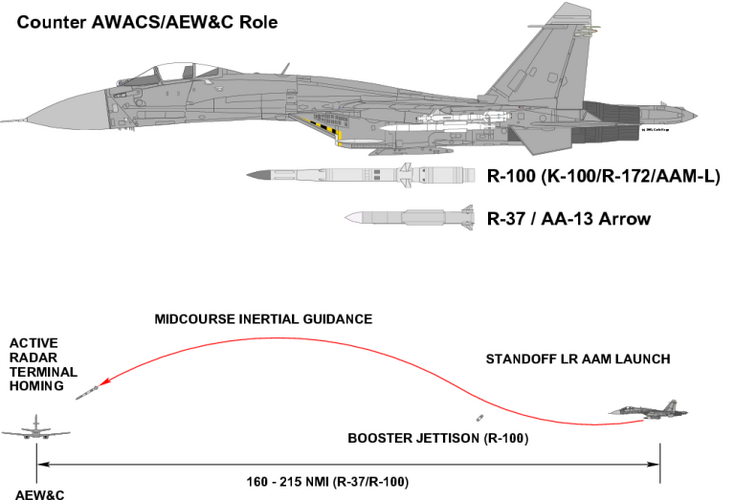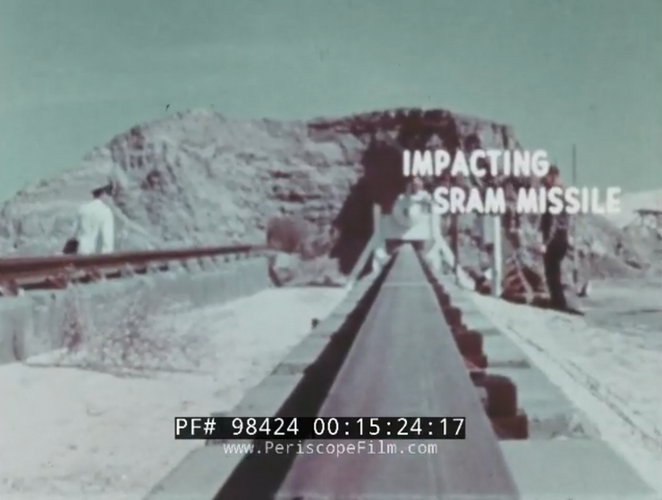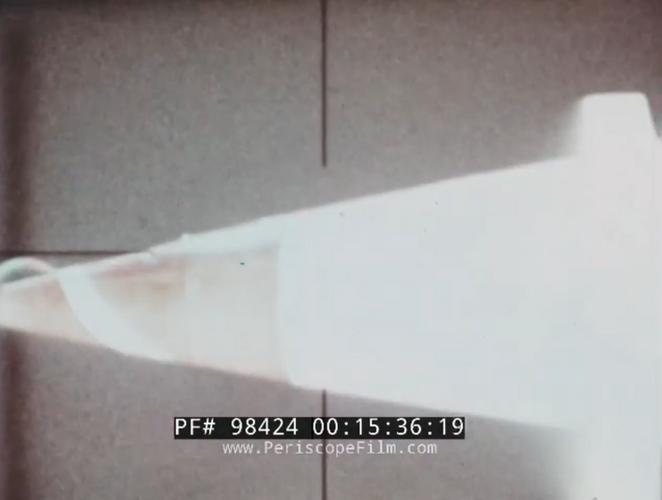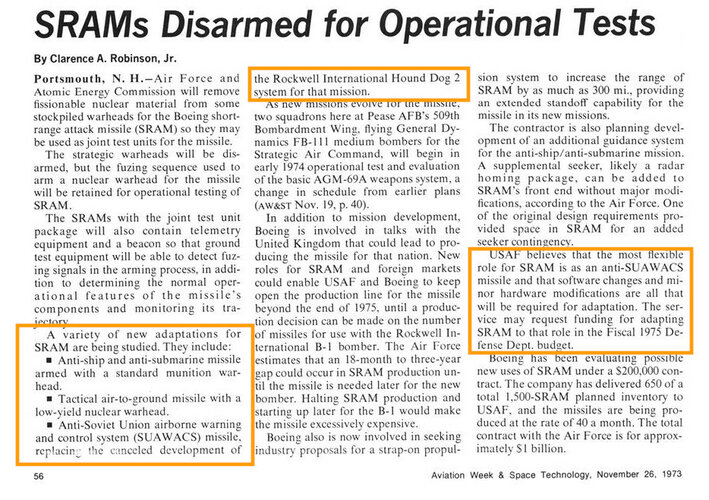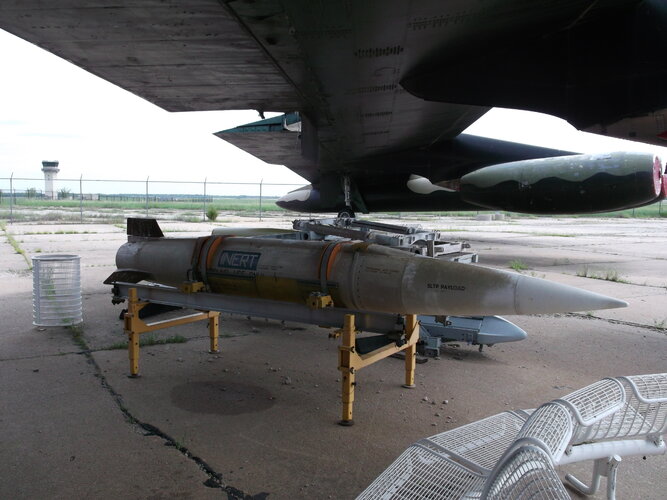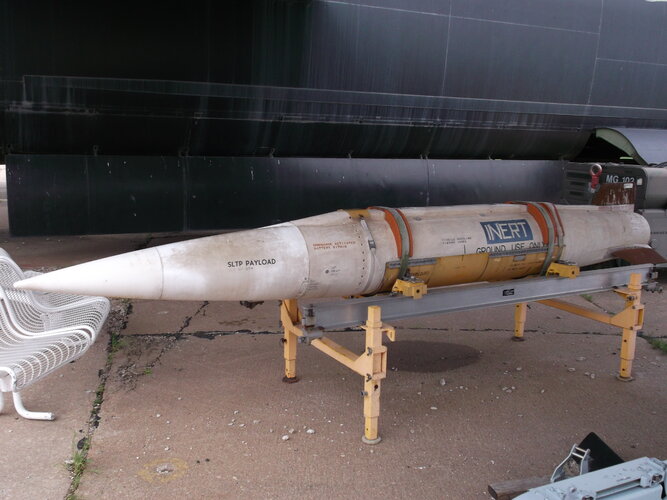In addition to the Navy LEAP tests, BMDO and the Air Force have been investigating retrofitting SRAM missile systems with LEAP interceptors to perform boost phase and midcourse intercepts from a forward-deployed, manned aircraft. As with the Navy surface-launched systems, an air-launched TMD system could provide the desired rapid relocatability and deployability. As an air-launched missile that can be fired at altitudes above 9 km (30,000 ft), the SRAM also affords the advantage of not having to fly through a significant portion of the lower atmosphere.
A large number of decommissioned SRAM Missiles, that were originally intended for precise air-to-ground delivery of nuclear munitions, are available. The SRAM provides both the required kinematics needed to perform exo-intercepts and the available payload volume without major modifications. Proposed tests incorporate the LEAP and its kickstage with a newly developed interstage module (IM) into the warhead section of the SRAM-A and SRAM II (Figure 21). [8] This design will also require a removable shroud that may be very similar to the Navy design.
Again, an incremental approach will be used to perform these low-cost tests. Test plans and objectives will be very similar to those of the Navy LEAP Tech Demo. As with Navy LEAP, early target launch detection, tracking, and handoff to the interceptor are critical to a tactical air-launched system and are carefully being investigated by the Air Force and the missile contractor, Boeing. Proposed netting of ground-, air-, and space-based sensors [such as Patriot, GBR-T and AEGIS radars, the AWACS, and BMDO's Brilliant Eyes or Miniature Sensor Technology Integration (MSTI) satellites] and use of advanced communications architectures (such as JTIDS) will help to resolve battle management, command, control and communications (BMC3) issues.
The first SRAM/LEAP feasibility test took place at the Pacific Missile Test Center (PMTC), Pt. Mugu, California on October 19, 1992. This test, called FT-0, was similar to the Navy LEAP FTV-1 experiment. FT-0 involved modifications to the missile flight software and aircraft mission tapes of an unmodified SRAM to allow it to fly out from under the launch platform (a B-1 Bomber) and upward in a TMD-type flyout (Figure 22). The mission was performed as an operational test launch from an operational platform. All experiment objectives were met. The missile achieved an altitude of greater than 60 km (200,000 ft) with better than expected stability and control. The two-pulse SRAM-A motor also experienced greater than expected ballistic performance and demonstrated its feasibility as a LEAP booster. The current test plan integrates the LEAP midcourse interceptor with the SRAM and performs an intercept of a TMD representative target by the end of FY 94. A second successful test of a SRAM-A (FT-1) similar to FT-0 was performed in April 1993 using a B-52 as the launch platform. Future tests will most likely use the B-52 since it is a long endurance, stand-off aircraft and would be better suited for this mission.

